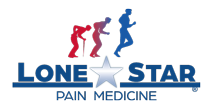
23 Mar How Is Pain Management Related to Spinal Rehab?
From time to time, Lone Star has the opportunity to work with a patient undergoing spinal rehab. Although relieving pain and restoring function do not constitute the entirety of a spinal rehabilitation program, they do play a role. We consider it a privilege to help patients in these two areas.
The Basics of Spinal Rehab
Spinal rehab is essentially a collection of treatments and strategies recommended to help patients recover from various spinal issues. The need for rehab could be rooted in a spinal injury, a chronic condition, or even recovery from a surgery.
Medical providers tend to focus on two primary goals: preventing further damage to the affected parts of the spine and restoring as much function and mobility as possible. When spinal rehab succeeds, patients experience less pain and the opportunity for a better quality of life.
What a Typical Program Looks Like
Spinal rehab tends to be highly individualized due to the varying nature of spinal injuries and disease. Like Lone Star, rehab specialists develop individualized treatment plans for each patient. Therefore, it is impossible to describe what spinal rehab looks like with a black-and-white treatment plan example.
That doesn’t mean we can’t offer a more general description. With that in mind, a typical spinal rehab program includes at least some aspects of the following six elements:
- Pain Management – Pain management is essential to spinal rehab for one simple reason: if pain cannot be relieved, patients are less likely to give their full effort to other parts of the program.
- Physical Therapy – Physical therapy is integral to spinal rehab due to its ability to strengthen muscles and improve flexibility. Increased strength and flexibility lead to more mobility and increased function.
- Occupational Therapy – As needed, occupational therapy helps patients learn new ways of doing things. They also learn to adapt to different ways of performing common tasks, like dressing and bathing.
- Counseling – Chronic pain has a psychological component that needs to be addressed during spinal rehab. Counseling addresses the mental and emotional aspects of recovery.
- Nutrition – A person’s diet directly impacts spinal rehab success. Therefore, nutrition management is another aspect of spinal rehab.
- Assistive Interventions – When necessary, a spinal rehab patient may be offered assistive interventions to improve recovery and aid with long term mobility and function. Assistive interventions like wheelchairs, scooters, and walkers can help a great deal in the drive to maintain independence.
Our focus at Lone Star Pain Medicine is spinal pain and its impact on mobility and function. We rely on things like injection therapies, spinal cord stimulation, and massage to assist patients on the rehab journey.
When All Goes to Plan
When all goes to plan in spinal rehab, a patient’s condition gradually improves. Over time, pain subsides and function is restored. With increased function comes increased mobility. The patient ultimately goes on to live a relatively normal life. As pain management specialists, we always hope for such an outcome.
When things don’t go to plan, we have to work harder to figure out why. We also need to figure out what we can do about it. Fortunately, pain medicine is not limited to prescription medications and invasive surgeries. We have access to a plethora of treatments and interventions that aren’t made available in the typical GP’s office.
Lone Star doctors are motivated whenever the opportunity to contribute to spinal rehab comes along. If you are in rehab right now and struggling with pain, we may be able to help. Make an appointment at our Weatherford clinic at your earliest convenience. We will do everything we can for you.


Sorry, the comment form is closed at this time.